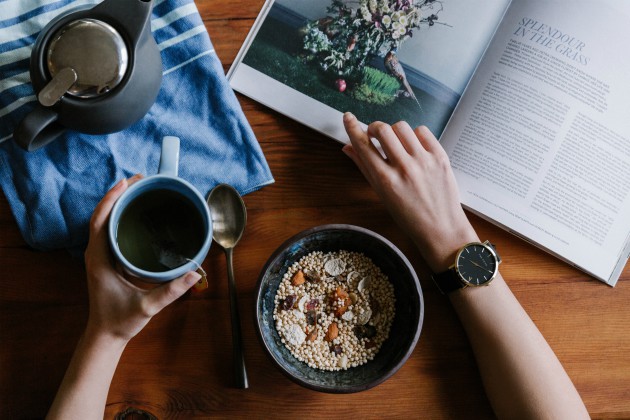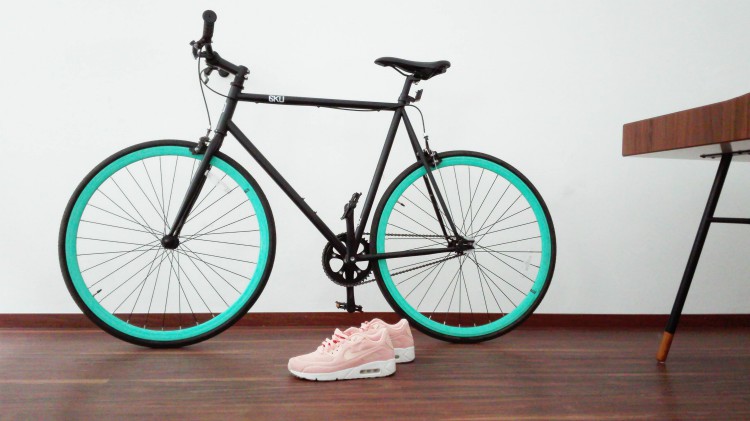Want to overhaul your daily habits to up your happiness, productivity, overall greatness in all aspects of life? K, no promises on that last one, but we can point you in the right direction.
Truthfully, many of us are looking for those little-known life hacks to happy, but not as many of us know how much power lies in our ordinary, day-to-day routines. Fortunately, we’ve got science on our side, and science tells us this: The secret to change is about building better habits. And it’s totally doable. Promise.
So what does a daily habit look like and how can you change something that feels so automatic? Hang tight. We’re going to show you how to hit your habit-building goals using the basics of behavior change. Once you get it, you’re on your way to a better you. Ready?
How Daily Habits Shape Your World
Daily habits are those things that you do every day, without fail, without thought, and without brainpower. Think default setting. Your habits are so ingrained that they require little to no effort. This automatic action can work in your favor if your habits are certified productive. It’s less helpful if your habits are questionable, like your tendency to hit snooze 437 times or counting wine as your only serving of fruit for the day. (We wish that worked too.)
Here’s Dr. Dan Ariely, a behavioral economist at Duke University, author, and all-around behavior-change guru, on habits:
The thing about habits is that for good and bad they require no thinking. An established habit, whether getting ready for work in the morning or having a whiskey after, is a pattern of behavior we’ve adopted—we stick to it regardless of whether it made sense when we initially adopted it, and whether it makes sense to continue with it years later.”
The good news, and there’s plenty of it, is that you can change those established, daily habits, and over time, your new default setting becomes the shiny, shit-is-together version of yourself you always wanted. The slightly-less-good news? It takes some experimentation—and a whole lot of work.
Change might not be fast and it isn’t always easy. But with time and effort, almost any habit can be reshaped.” —Charles Duhigg, author and New York Times reporter, in The Power of Habit: Why We Do What We Do in Life and Business
A How-To Guide for Habit-Building That Sticks
Try these four research-backed tips for habit-building that sticks, and you’ll be on your way to your best life. Or at least a slightly improved one. (Hey, baby steps count.)
1. Got big goals? Start with small habits

Look, we all want to hit our big goals—run that half-marathon, finally learn to code, break the whole-pint-of-ice-cream-after-work habit. But those goals are both too big and too vague to inspire action. The trick to hitting your goals? Scale them back. Way back.
Researchers found that setting small obtainable goals made people more likely to stick with them long term. Dr. BJ Fogg, Director of the Persuasive Tech Lab at Stanford University, created a five-day online program to help people hit goals based on his 20+ years of research. It’s called Tiny Habits, and it’s about—you guessed it—micro goal-setting.
Tiny Habits helps you break down bigger goals into teeny, minuscule little steps. And then it reminds you to take those steps and repeat them. Every day.
Let’s say you want to get into a morning workout routine. You’re starting by putting your workout clothes on in the a.m. That’s it. You’re not even moving yet until step one is habitual. Think about it: You just hit your goal by putting on pants. How fantastic is that?
Try it: Sign up for a session of Tiny Habits yourself and see how five days of mini goals, and reminders to hit them, can help you create the habits that get you to your bigger goals.
2. Make daily habits measurable

Pants lead us to step two: Keep track. A huge part of building better habits is consistency. How do you know if you’re consistent if you’re not paying attention? You don’t.
Research has our backs here. The National Weight Control Registry tracks the daily habits of people who’ve successfully lost at least 30 pounds and kept it off for one year or more, a statistically unlikely feat. One of their top habits? Frequent weigh-ins. Forty-four percent of members weigh themselves daily, and an additional 31 percent track their weight weekly, according to The American Journal of Clinical Nutrition. They keep track of their weight, forgive the fluctuations, and catch any significant changes before they get out of control. And it works.
Try it: You can use a spreadsheet, a habit-tracking app, a checklist, a whiteboard, your forehead, whatever works for you. But keep track of the habit you want to form, even when you mess up, so you can see the trends and keep on progressing.
3. Set up a routine-friendly environment

Think you’re in control of your choices? Think again. It turns out that what’s around us has a lot to do with how we act. There are whole labs dedicated to irrational human actions that prove that what we eat, how much we move, and even how well we listen to our employees can change if our environment does.
Here’s a fascinating example: A team of behavioral researchers wanted to help Google employees nosh on fewer M&Ms. Simply putting the candies in opaque dishes, rather than see-through ones, cut consumption by 3.1 million calories over the course of seven weeks at the company’s New York office, reported The Washington Post. We don’t need more willpower; we just need less transparent candy jars.
Try it: You can apply this in so many easy ways. Want to get into that gym habit? Put your workout clothes and shoes next to your bed. Better yet? Sleep in them. More into building a healthy-eating habit? Keep your fruits and veggies in the front of the fridge, instead of in the crisper where they usually go to die. In short, you’re more likely eat them when you can see them.
4. Identify your roadblocks…and how to get around them

Sometimes, you’re going to screw this up. You’re going to sleep in, get bored with your routine, laugh in the face of your habit tracker. But that’s totally okay because your plan also includes a back-up plan for times just like these. Wait, what? Yes, you want to think about the possible roadblocks before they happen and plan for how to deal with them. Public health researchers call these barriers to change; the rest of us call them life.
Here’s an example: A classic study of older individuals who received a knee or hip replacement found that those who wrote down a concrete plan of how they’d complete their rehab exercises in spite of anticipated obstacles (e.g., moments of intense pain) had significantly better outcomes than those who didn’t make a plan.
How much better? The patients who considered their roadblocks were up and walking nearly two times faster than their plan-less peers, according to the 1992 study. Coming up with a plan of how to address potential barriers before they occurred helped the patients persevere.
Try it: Jot down every obstacle you think might get in your way. This is anything from boredom to the classic “too busy” excuse and then some. Got a long list? Good. Now you’re going to come up with a plan of attack for each and every one of them.
Too busy for your coding class this week? Practice what you’ve learned for 15 minutes on your own at 7:30 a.m. before you head to work on Tuesday and Thursday. The more specific you are with your barrier blocking, the better.
Bonus: Repeat the process whenever you want to form new daily habits
The next step is up to you. Choose a daily habit you want to build (or break) and keep our habit-change checklist on hand to help you on your way.

- Focus on one small step at a time.
- Keep track of how you’re doing.
- Switch up your environment.
- Plan for obstacles.
And remember: Change is both difficult and possible. So cut yourself some slack as you work on it.
Your turn: What’s your best habit-building hack? Got a great tool to keep track of your goals? Tell us more in the comments below.
Author: Chelsey Taylor
Chelsey likes words, especially adjectives, and has been perfecting her perfectionism since infancy. She’s an endorphin-gatherer, top-knot connoisseur, and content manager at Panda Planner.

[…] can begin by creating positive routines – start exercising, eating healthy meals, and spending quality time with loved ones. In fact, you […]